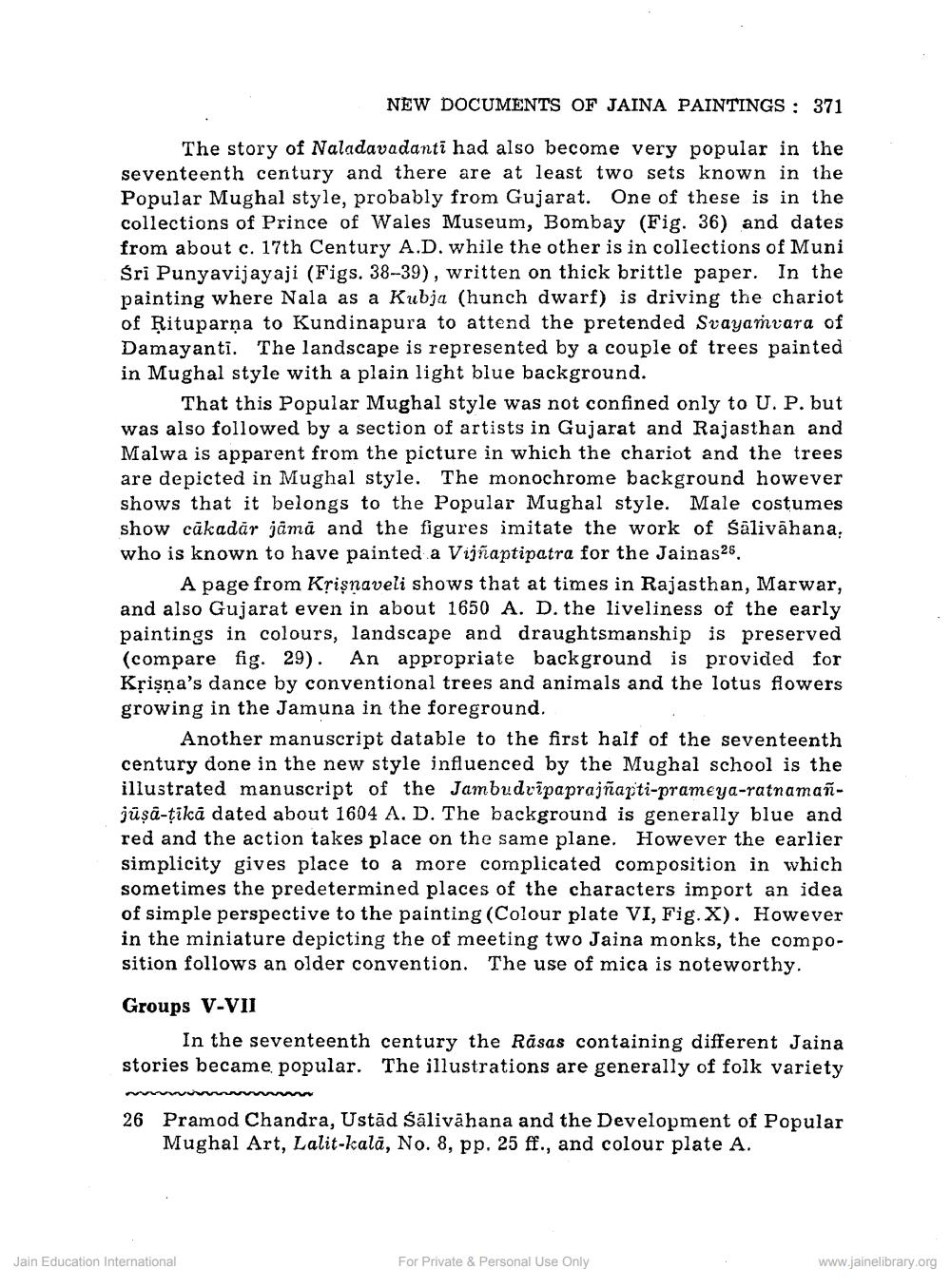________________ NEW DOCUMENTS OF JAINA PAINTINGS : 371 The story of Naladavadanti had also become very popular in the seventeenth century and there are at least two sets known in the Popular Mughal style, probably from Gujarat. One of these is in the collections of Prince of Wales Museum, Bombay (Fig. 36) and dates from about c. 17th Century A.D. while the other is in collections of Muni Sri Punyavijayaji (Figs. 38-39), written on thick brittle paper. In the painting where Nala as a Kubja (hunch dwarf) is driving the chariot of Rituparna to Kundinapura to attend the pretended Svayamvara of Damayanti. The landscape is represented by a couple of trees painted in Mughal style with a plain light blue background. That this Popular Mughal style was not confined only to U. P. but was also followed by a section of artists in Gujarat and Rajasthan and Malwa is apparent from the picture in which the chariot and the trees are depicted in Mughal style. The monochrome background however shows that it belongs to the Popular Mughal style. Male costumes show cakadar jama and the figures imitate the work of salivahana, who is known to have painted a Vijnaptipatra for the Jainas26. A page from Ktisnaveli shows that at times in Rajasthan, Marwar, and also Gujarat even in about 1650 A. D. the liveliness of the early paintings in colours, landscape and draughtsmanship is preserved (compare fig. 29). An appropriate background is provided for Ksisna's dance by conventional trees and animals and the lotus flowers growing in the Jamuna in the foreground. Another manuscript datable to the first half of the seventeenth century done in the new style influenced by the Mughal school is the illustrated manuscript of the Jambu dripaprajnapti-prameya-ratnamanjusa-tika dated about 1604 A. D. The background is generally blue and red and the action takes place on the same plane. However the earlier simplicity gives place to a more complicated composition in which sometimes the predetermined places of the characters import an idea of simple perspective to the painting (Colour plate VI, Fig.X). However in the miniature depicting the of meeting two Jaina monks, the composition follows an older convention. The use of mica is noteworthy. Groups V-VII In the seventeenth century the Rasas containing different Jaina stories became popular. The illustrations are generally of folk variety mimi 26 Pramod Chandra, Ustad salivahana and the Development of Popular Mughal Art, Lalit-kala, No. 8, pp. 25 ff., and colour plate A. Jain Education International For Private & Personal Use Only www.jainelibrary.org




